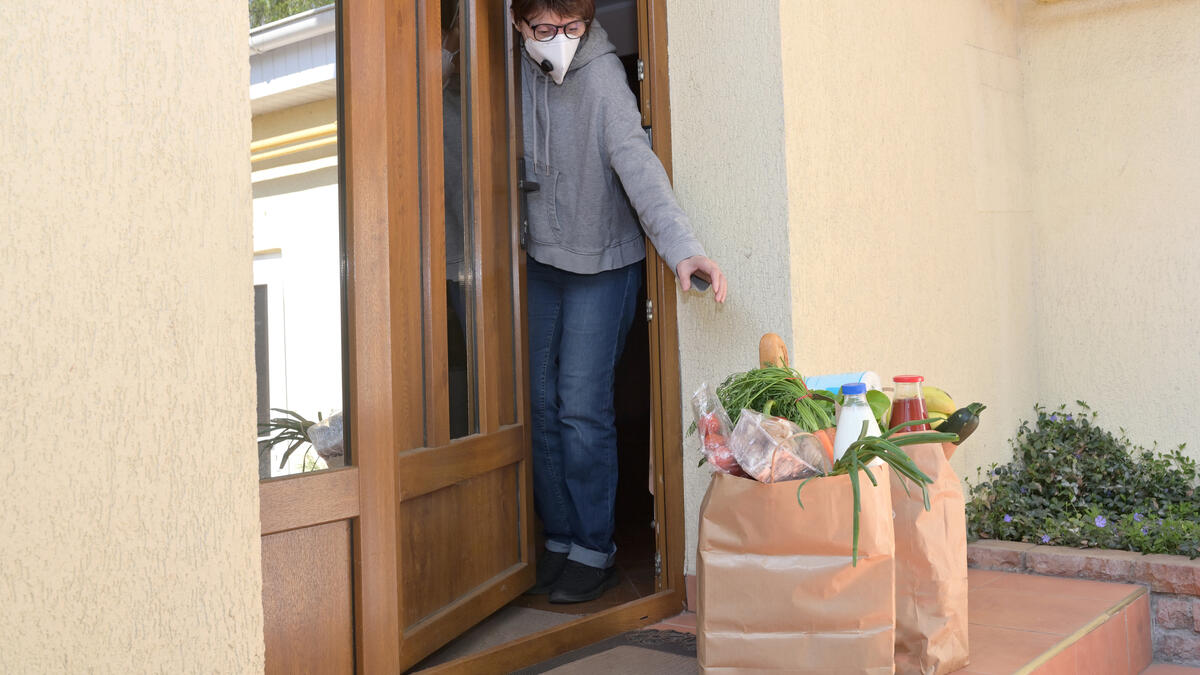Two ASU geographers investigate COVID-19 challenges through a geospatial lens

The pandemic has required many people to replace in-store visits with online food shopping, an opportunity not afforded to those without internet access or a debit card. This disconnect has created food insecurities for many, a subject being researched by Daoqin Tong in the School of Geographical Sciences and Urban Planning. Photo courtesy of DepositPhotos.com.
COVID-19 caused a pandemic, but the challenges we face from it extend far beyond the virus. Two professors with Arizona State University's School of Geographical Sciences and Urban Planning have been selected for fellowships to further investigate these challenges.
The Geospatial Software Institute (GSI) Conceptualization Project, which is supported by the National Science Foundation, has selected 16 researchers from 13 institutions to tackle projects related to COVID-19 challenges using geospatial software and advanced capabilities in cyberinfrastructure and data science.
Vetting research through replication and reproduction
Peter Kedron, assistant professor in the School of Geographical Sciences and Urban Planning and member of the school’s Spatial Analysis Research Center, will be using this fellowship to work with his colleague Joseph Holler, assistant professor at Middlebury College, to advance COVID-19 research through assessing credibility with reproductions and replications.
“To make the best possible decisions, we must know more than the results of recent COVID-19 research,” Kedron said. “We must also know how credible those results are because understanding the credibility of research allows us to appropriately weight findings when making decisions about pandemic response.”
To assess credibility, Kedron will incorporate students from ASU and Middlebury College into the research by working with them to see if the research can be reproduced and replicated.
“Typically, we establish the credibility of research by conducting independent reproductions and replications,” Kedron explained. “However, the novelty and widespread impacts of COVID-19 have limited the opportunity to use reproductions and replications to assess what we think we know. This project will advance COVID-19 research by using reproductions to directly assess the reliability of the research projects of GSI fellows.”
The project will develop teaching modules, training materials, and a pedagogical model for teaching reproducible research practices, as well as the hands-on experience for students as they participate in a virtual workshop series on the tools and practices of reproducible research, support the development of pre-analysis plans, and attempt direct reproductions of COVID-19 research.
More people facing food insecurity during the pandemic
Even when not in the midst of a pandemic, many families and communities face food insecurity. When combined with the constraints of quarantine, including increasing unemployment rates, even more people are faced with this challenge.
“Adequate access to affordable healthy food has become a pressing societal issue due to the COVID-19 pandemic,” said Daoqin Tong, associate professor in the School of Geographical Sciences and Urban Planning and member of the school’s Spatial Analysis Research Center. “The number of families who are food insecure and in need of food assistance has increased substantially during COVID-19. Meanwhile, the social distancing requirement is changing the way that people access food with many people replacing in-store visits with online food shopping and pickup.”
To help understand this issue better, Tong’s project combines a large food access spatial dataset and relevant socioeconomic and demographic data to examine how economic stress and the new rules for obtaining food impact healthy food access during COVID-19. Her study will also produce a food access map to compare the patterns before and during COVID-19, examine the potential factors associated with the food access pattern change, and explore strategies that could be used to help improve healthy food access in disadvantaged neighborhoods.
“The project will be conducted in Maricopa County where healthy food access represents a critical challenge,” Tong said.
With a population of more than 4 million people, the region is among the fastest growing in the nation and one where food access and insecurity was a critical issue even prior to COVID-19.
“We plan to share the research findings through maps and summary statistics with food assistance programs, nonprofit organizations and government agencies in Maricopa County.”
ASU among esteemed group selected for GSI fellowship
The GSI Conceptualization Project is supported by the National Science Foundation, and carried out in partnership with the American Association of Geographers, Consortium of Universities for the Advancement of Hydrologic Science, Inc., the National Opinion Research Center at the University of Chicago, Open Geospatial Consortium, and University Consortium for Geographic Information Science. Technical and cyberinfrastructure support are provided by the CyberGIS Center for Advanced Digital and Spatial Studies at the University of Illinois at Urbana-Champaign.
In total, 16 fellows from 13 institutions were selected to engage in projects of a wide range of subjects with roots in the COVID-19 crisis, including mobility patterns, access to health care and food systems, and racial and disability disparities during the pandemic.
“Geospatial data and tools have enormous potential for helping us address the challenges of COVID-19, and these 16 fellows have exactly the right qualifications and experience,” said Michael Goodchild, research professor in the School of Geographical Sciences and Urban Planning and chair of the NSF project advisory committee.
More Health and medicine

Innovative, fast-moving ventures emerge from Mayo Clinic and ASU summer residency program
By Georgann YaraIn a batting cage transformed into a custom pitching lab, tricked out with the latest in sports technology,…
Is ‘U-shaped happiness’ universal?
A theory that’s been around for more than a decade describes a person’s subjective well-being — or “happiness” — as having a U-…
College of Health Solutions medical nutrition student aims to give back to her Navajo community
As Miss Navajo Nation, Amy N. Begaye worked to improve lives in her community by raising awareness about STEM education and…